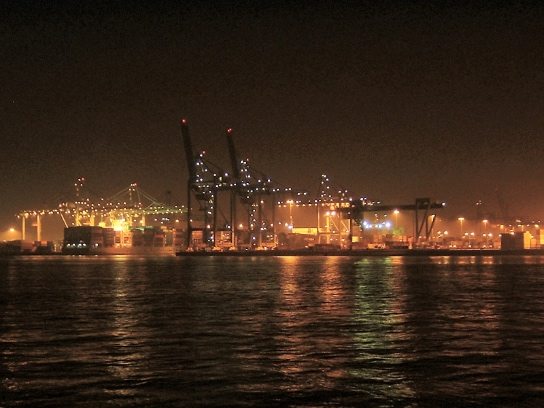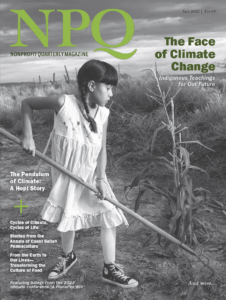
June 15, 2017; New York Times
Despite President Trump having pulled the U.S. out of the Paris Agreement, scientists agree that the future of our planet is in jeopardy. In many parts of the world, the effects of climate change are simply undeniable: Seas are rising, storms are getting worse, and drought is forcing millions to migrate.
A consensus is emerging that we can no longer focus solely on reducing carbon emissions in order to keep our planet habitable. Even if countries meet their targets under the Paris Agreement, the global community has not moved quickly enough to save us from environmental changes that are already disrupting populations worldwide. At this point, renewable energy strategies must be combined with adaptation and mitigation to reduce the severity of floods, droughts, and other climate change impacts around the world. (As of this writing, the temperature in Phoenix, Arizona, is expected to reach 120 degrees Fahrenheit, with temperatures over 110 degrees for the entire week.)
Coastal cities are among the geographic areas under most immediate threat, and in many cases, it is these municipalities that are leading the way toward innovative solutions. In a recent New York Times article, Michael Kimmelman profiles the city of Rotterdam, where visionary leadership is transforming an old industrial landscape into one that is cosmopolitan, climate-resilient, and community-oriented.
Much of Rotterdam, which sits at the confluence of several rivers running into the North Sea, is below sea level. Rising tides and severe storms pose an existential threat. But the Dutch do not see responding to climate change as a drag on their economy, according to Kimmelman. Rather, they see it as an economic opportunity. Dutch firms are helping countries around the world manage water in innovative ways on full display in Rotterdam.
Rotterdam is on the forefront of climate mitigation, with an approach that might seem anathema to many. Rather than trying to keep all the water out of the city with more barricades, it is letting the water in. The idea, Kimmelman says, is to “live with the water, rather than struggle to defeat it.” He writes:
The Dutch devise lakes, garages, parks, and plazas that are a boon to daily life but also double as enormous reservoirs for when the seas and rivers spill over.
Even more importantly, the Dutch see managing the effects of climate change as not just about water engineering but about social resiliency. Anyone familiar with the history of “urban renewal” in U.S. cities knows that poor planning has often resulted in the loss of vital neighborhoods. Urban planners in Rotterdam have used the threat of climate change to create urban amenities that are helping to strengthen once-neglected neighborhoods and make the city a better place to live.
Sign up for our free newsletters
Subscribe to NPQ's newsletters to have our top stories delivered directly to your inbox.
By signing up, you agree to our privacy policy and terms of use, and to receive messages from NPQ and our partners.
Among those projects highlighted in the New York Times is the Eendragtspolder, a 22-acre park built on reclaimed fields and canals. Bike paths and a new rowing course make the area a popular destination for residents, while at the same time the area acts as a giant reservoir when the Rhine River overflows, a natural occurrence expected every decade or so as temperatures warm.
Similarly, Dakpark, a dike in a poor, mostly immigrant neighborhood, has been turned into an urban hub, with a shopping center and park on the roof. The park slopes down to street level, connecting streets and housing to this kilometer-long greenway.
The project has been so successful that it has become a model for community-initiated projects. The manager of the Rotterdam “resilience team,” Wynand Dassen, says, “We believe you get the smartest solutions when communities are engaged and help make the links between water and neighborhood development.”
Letting the water flow is one part of a comprehensive water management effort in Rotterdam that also includes a great gate at the North Sea, which closes off the city—and one of Europe’s most important ports—from storm surges. This ingenious piece of engineering is a destination for locals as well as tourists, with picnickers lining the shore during regular tests of the system.
Rotterdam continues to have its challenges. The port is not only the largest employer in the city, but a major fossil fuel hub with five oil refiners and a massive coal-fired power plant. Overall, the port produces 17 percent of the Netherlands carbon footprint. Reducing the city’s economic reliance on fossil fuels is essential not only to the Netherlands but to the entire global community.
But, in the meantime, Rotterdam is not waiting to see the results of the next big hurricane or weeks-long rain that brings water pouring over the banks of its rivers. It is thinking ahead, creating a city that both infrastructure and social resiliency. As Harold van Waveren, a senior government advisor, explains in the Times article:
Protection against climate change is only as strong as the weakest link in the chain, and the chain in our case includes not just the big gates and dams at the sea but a whole philosophy of spatial planning, crisis management, children’s education, online apps, and public spaces.
In the U.S., we have seen water rushing through the subways of our largest metropolitan center and watched for days as stranded families waited to be rescued from the rooftops of their New Orleans homes. The Dutch are wondering why we have done so little to prepare for the next big one.—Karen Kahn













